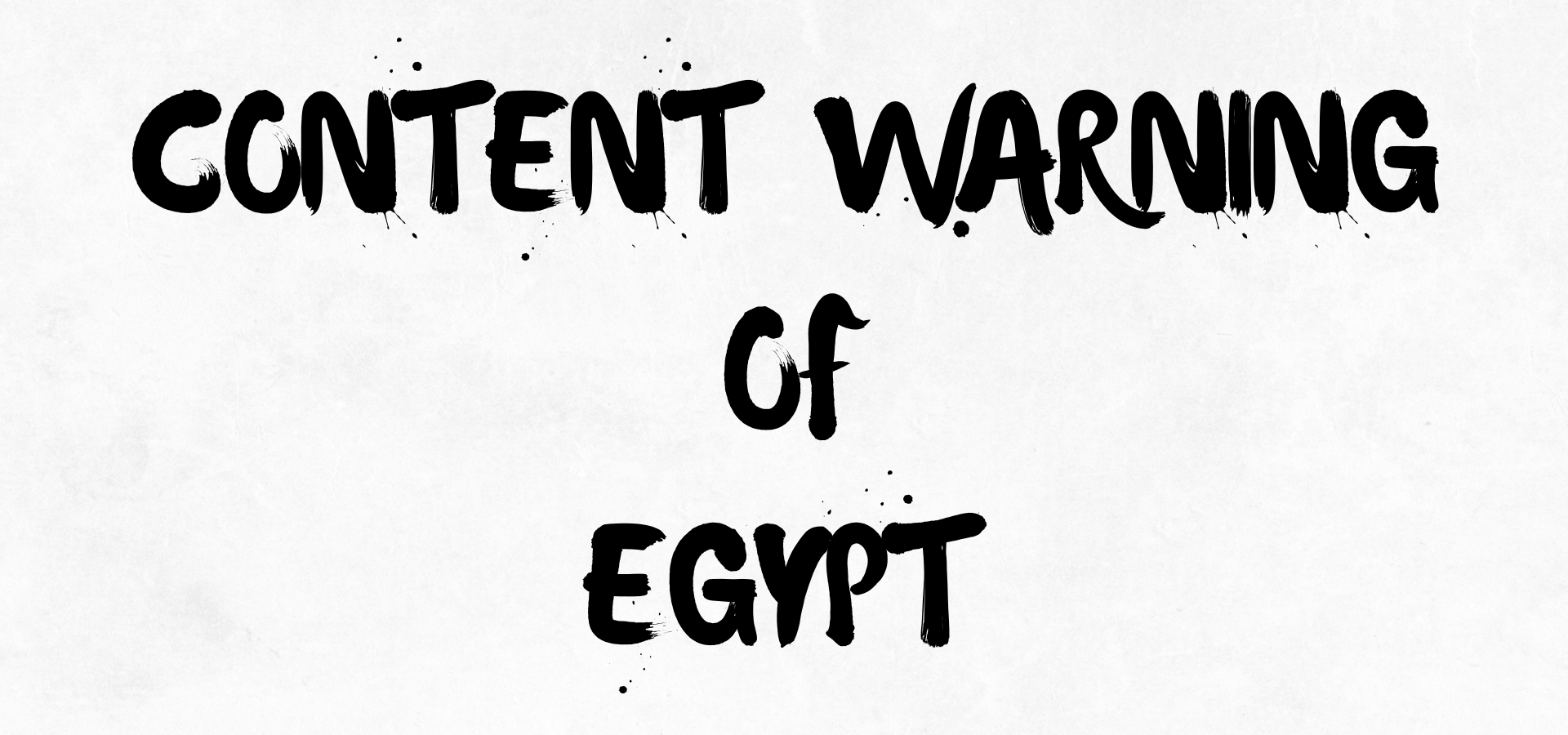

Hi there,
I tried to create the most comprehensive list possible to help you make an informed decision before picking up Treasures of Egypt: The Spear & the Scythe. With that said, I’m aware that despite my best efforts, I will always face the limitations of my own life experiences. So, please don’t hesitate to contact me through my contact form if you believe something should be added to the content warning list.
Also, despite my best efforts to keep it vague, the content warning list does contain spoilers. So, keep that in mind. You can avoid spoilers by just reading the headlines in the list below without expanding their content.
-
The story’s main topics are racism, liberation, and emancipation. While the plot reaches a positive conclusion, acts of racism and brutality toward a minority are often justified by the ruling regime. These sentiments are depicted negatively and are deconstructed by the narrative and the members of the oppressed group, particularly by the secondary protagonist, Khafset, who represents his community throughout the story. Below you’ll find detailed content warnings.
-
A character’s struggles with alcoholism are shown in one scene and mentioned throughout the story.
-
An animal is shown dying in one scene, albeit in a fantastical way. This means that there is no blood or a body left behind.
-
There is an attempt at suicide in one scene and attempts at self-sacrifice in others.
-
The protagonist experiences suicidal thoughts in two separate scenes.
-
Expressed by the protagonist and fades as her arc progresses.
-
Directed by the secondary protagonist toward the primary protagonist, and fades as the story progresses.
-
Depicted during action scenes.
-
On-page depiction of death and dangerous injuries, including the death of a predatory fantastical creature impersonating a child/family member.
-
The main characters discuss the death of a sibling and the deaths of their parents. A fantastical impersonator of the sibling is killed by the protagonist while in child form.
-
The main characters experience grief due to losing family members.
-
Racist sentiments are expressed toward a minority. The main character also mentions experiencing prejudice due to having a mixed ethnic background. Racism is a central topic and is repeated throughout the story.
-
Though explicit acts of sexism are not depicted, the main character is often reminded whenever she makes a mistake that she was chosen over the boys.
-
Characters face various struggles and prejudices due to their social class, including limited opportunities and discriminatory attitudes from those in higher social strata.
-
Though the story depicts ancient religions, a minority group faces prejudice due to its religious affiliation.
-
The secondary protagonist recounts being beaten by army officials as a child. A predatory fantastical creature is killed while impersonating a child.
-
Mention of child death due to illness, and the death of a predatory fantastical creature in the form of a child.
-
A child is struggling with diabetes without access to a cure due to the medical limitations of the time period.
-
Off-page. Communicated through stories told by the parents’ children. Three parents die at the hands of the army, two die during childbirth, and two in work camps.
-
Though not shown, there are mentions of parents dying due to childbirth.
-
Off-page. A child is kidnapped by the queen.
-
The brutality of the ancient equivalent of a modern-day police force toward a minority is heavily implied and often discussed.
-
Though not shown, there are mentions of slavery being the norm and children being sold into slavery. This is always shown as a negative, and it’s deconstructed and challenged by the narrative.
-
Off-screen. The main character expresses negative sentiments toward her father for abandoning her family.
